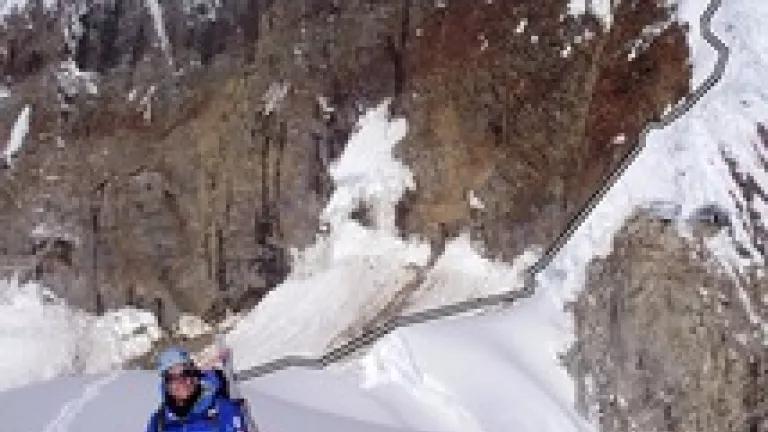
Soon after my return from Chile, I came across an article in the American Alpine Journal, where climbers report new routes up the mountains of the world. I was struck by a report from Sophie Denis, who recorded her group's ascent of Huantsan, a mountain in the Peruvian Andes. Her photo of the west face of the mountain shows a sheer, steep face of bare brown rock, with a small cap of frosty glacier at the top.
I know this mountain. But the picture didn't look like the Huantsan I remember. Back in the summer of 1979, I led a group that made a first ascent of the west face of Huantsan. We were experienced New England climbers, but had little experience with the high altitudes of the Andes. It was a tough, 35-day effort, icy and precarious. Two members of our group spent three nights on an ice ledge just 20 inches wide.
"The mountain…rose out of the green Rajuqolta Valley like a white fountain," we wrote in our submission to the American Alpine Journal.

Huantsan, at left, in 2010 (credit: Sophie Denis) and in 1979, at right
As you can see in these photos, both taken at the same time of year--2010 on the left, my group in 1979 on the right--Huantsan can no longer be described that way. The change in snow cover is astounding, and sobering.
Throughout the Andes, glaciers are in retreat, a phenomenon that has become more pronounced and rapid in recent decades. Scientists suggest that global warming is primarily responsible. Peruvian glaciers have lost more than 20 percent of their mass since we made our climb of Huantsan. Bolivia's 18,000-year-old Chacaltaya Glacier disappeared completely in 2009--scientists monitoring the ice mass thought it would hold out until 2015.
Vanishing glaciers are not merely a cosmetic issue. Glacial melt water provides an important source of drinking water as well as hydroelectric power for Latin American cities. As the glaciers continue to shrink, residents could face water and power shortages, and cities would need to invest hundreds of millions of dollars in new water and energy supplies. The changing hydrology could also have a profound effect on agriculture as well as mountain wildlife.
In Peru, people say that they will need to change the name of this mountain range, now the Cordillera Blanca (White Mountains). Scientists predict that many low-altitude glaciers in this range could vanish completely in the next 10 to 20 years--a disappointment, perhaps, for avid climbers, but a deeply serious concern for the nations of the Andes.
Global warming, in this part of the world, is not easily dismissed as a "political" issue. The truth is right there on the mountain, for everyone to see.